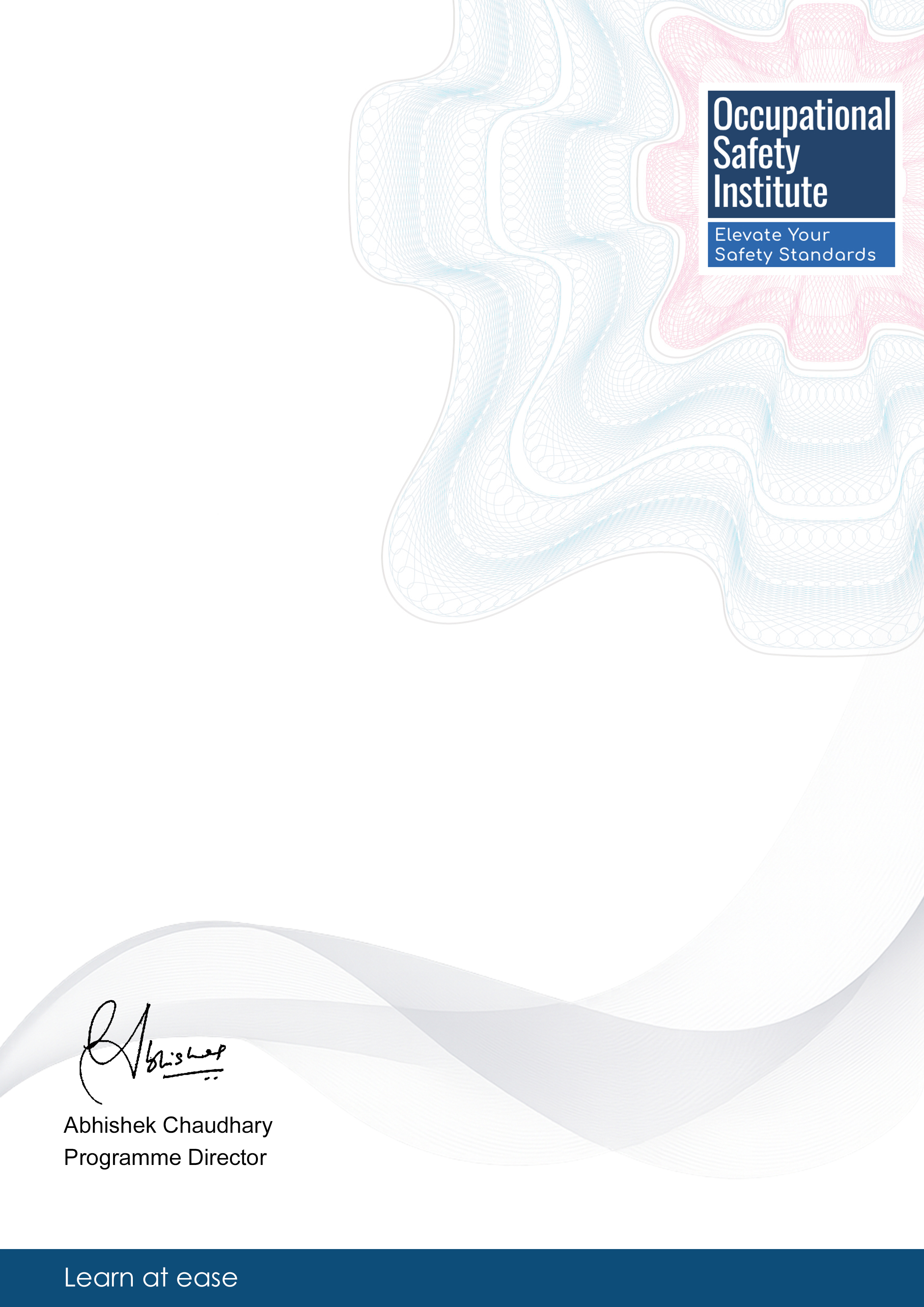Module 1: Introduction to AI in Hazard Identification
An overview of AI applications in hazard identification, introduction to AI tools and techniques.
This course introduces the use of Artificial Intelligence in hazard identification for safety professionals, AI specialists, and individuals interested in leveraging technology for workplace safety. Participants will gain hands-on experience with AI tools, enhancing safety practices and minimizing risks in the workplace.
4.4/5
|96 reviews
|418 students enrolled
Comprehensive, industry-recognized certification that enhances your professional credentials
Self-paced online learning with 24/7 access to course materials for maximum flexibility
Practical knowledge and skills that can be immediately applied in your workplace
An overview of AI applications in hazard identification, introduction to AI tools and techniques.
Exploring AI tools for risk assessment, hands-on practice with risk analysis using AI solutions.
This module provides you with practical frameworks and methodologies for conducting thorough risk assessments in various workplace settings. You'll learn evidence-based approaches to identify, evaluate, and prioritize potential hazards.
Effective risk assessment has been shown to reduce workplace injuries by up to 70% when implemented correctly, making this a critical skill for safety professionals.
Using AI for incident prediction, case studies on incident prevention through AI technologies.
Integrating AI into safety management systems, optimizing safety protocols with AI solutions.
This programme includes comprehensive study materials designed to support your learning journey and offers maximum flexibility, allowing you to study at your own pace and at a time that suits you best.
You will have access to online podcasts with expert audio commentary.
In addition, you'll benefit from student support via automatic live chat.
Assessments for the programme are conducted online through multiple-choice questions that are carefully designed to evaluate your understanding of the course content.
These assessments are time-bound, encouraging learners to think critically and manage their time effectively while demonstrating their knowledge in a structured and efficient manner.
AI specialists in hazard identification are in high demand across industries due to the critical role technology plays in enhancing workplace safety.
Professionals can progress to senior AI safety roles, lead AI implementation projects, and contribute to cutting-edge advancements in safety technology.
Responsible for developing and implementing AI solutions for hazard identification and risk mitigation.
Analyzes safety data, optimizes AI systems for hazard detection, and provides recommendations for safety improvement.
Professionals can benefit from networking opportunities in the AI safety community, pursue advanced certifications in artificial intelligence, explore further education paths in safety technology, and gain industry recognition for expertise in AI applications for safety.
Safety Engineer
"Thanks to this course, I can now effectively apply AI techniques to identify potential hazards in our manufacturing facility, improving safety protocols."
Risk Analyst
"The AI tools taught in this course have revolutionized how I analyze real-world scenarios to predict and prevent workplace hazards, making our environment safer."
Health & Safety Officer
"Implementing AI-based risk mitigation strategies from this course has significantly enhanced our workplace safety measures, reducing incidents and ensuring employee well-being."
AI Specialist
"This course sharpened my hazard recognition skills with AI, enabling me to proactively identify and address potential risks in complex industrial settings."
Upon successful completion of this course, you will receive a certificate similar to the one shown below:

Advanced Certificate Artificial Intelligence for Hazard Identification
is awarded to
Student Name
Awarded: December 2025
Blockchain ID: 111111111111-eeeeee-2ddddddd-00000
No specific prior qualifications are required. However, basic literacy and numeracy skills are essential for successful completion of the course.
The course is self-paced and flexible. Most learners complete it within 1 to 2 months by dedicating 4 to 6 hours per week.
This course is not accredited by a recognised awarding body and is not regulated by an official institution. It is designed for personal and professional development and is not intended to replace or serve as an equivalent to a formal degree or diploma.
This fully online programme includes comprehensive study materials and a range of support options to enhance your learning experience: - Online quizzes (multiple choice questions) - Audio podcasts (expert commentary) - Live student support via chat The course offers maximum flexibility, allowing you to study at your own pace, on your own schedule.
Yes, the course is delivered entirely online with 24/7 access to learning materials. You can study at your convenience from any device with an internet connection.
Effective Workplace Hazards Management Strategies
This course provides in-depth strategies for managing workp…
Worksite Hazard Recognition for Accountants in Dutch Windmills
This course focuses on training accountants to recognize an…
Business Intelligence Analytics for Workplace Safety
This course explores using business intelligence analytics …
Event Emotional Intelligence Skills
This course delves deep into emotional intelligence in even…
Disclaimer: This certificate is not intended to replace or serve as an equivalent to obtaining a formal degree or diploma. This programme is structured for professional enrichment and is offered independently of any formal accreditation framework.